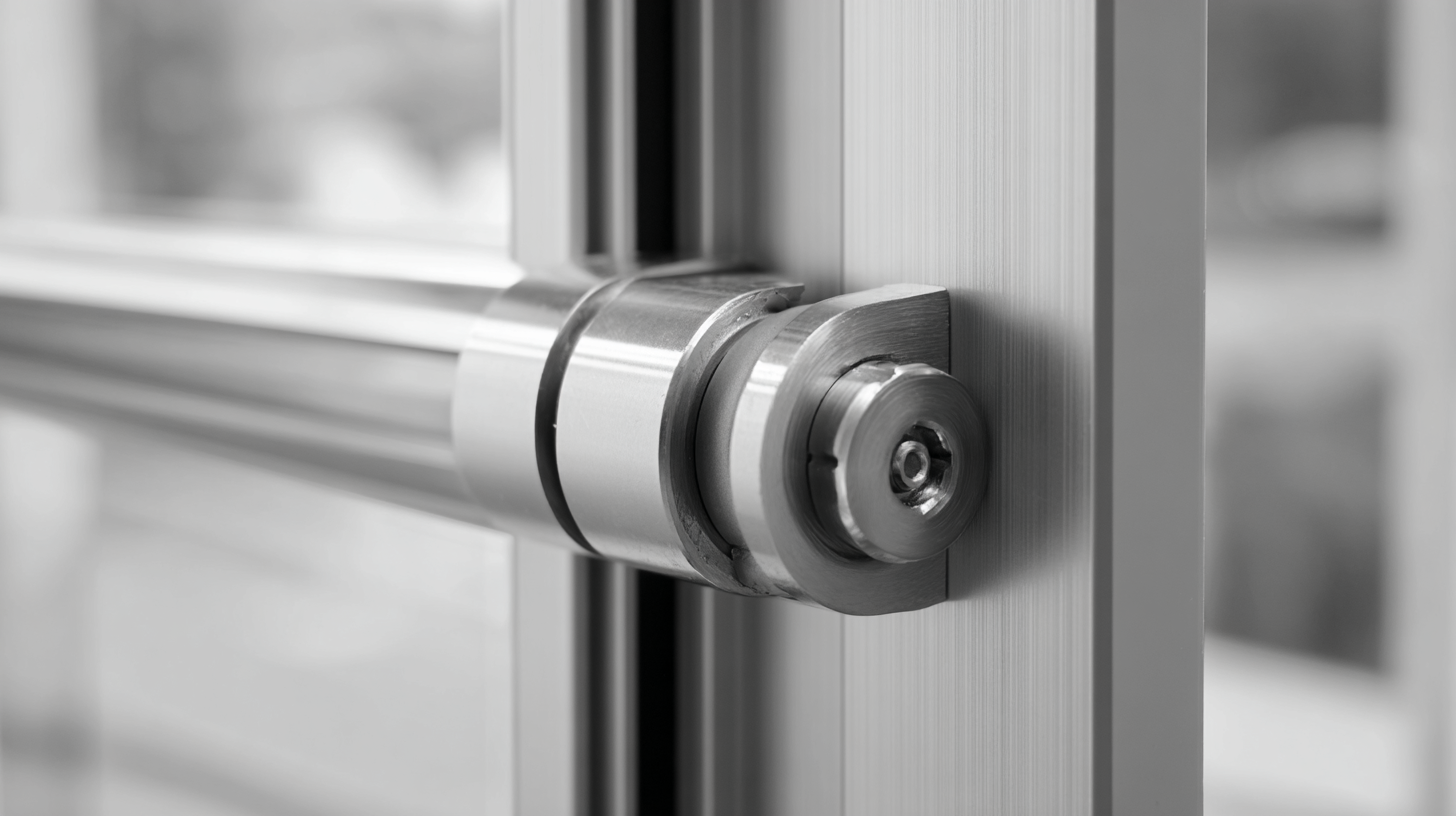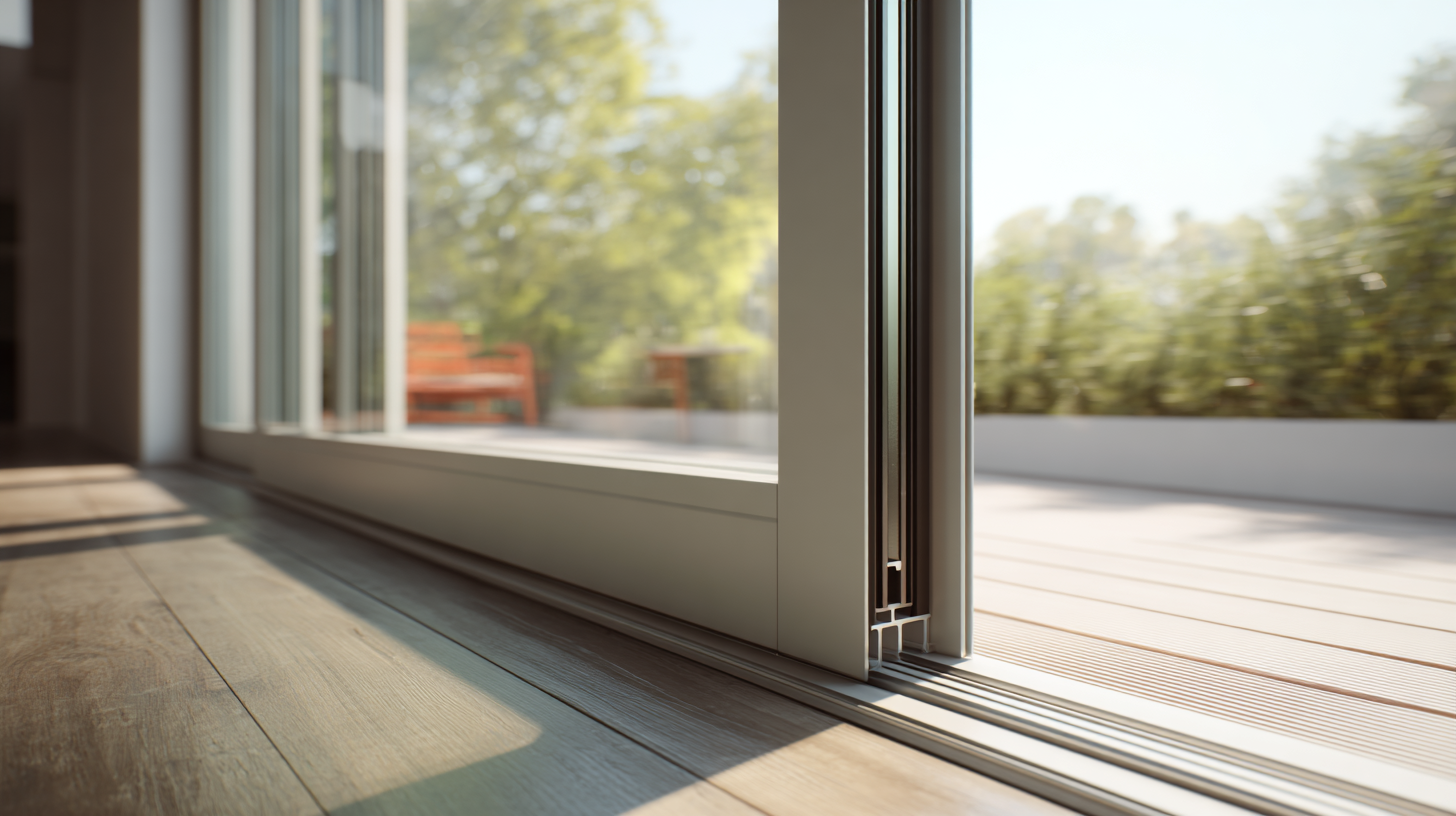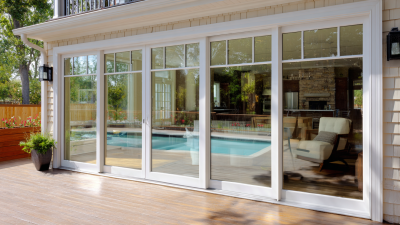NEWS at Quanex
See the latest news, posts and events from Quanex about our business, the industry, our people and more.
How to Enhance Energy Efficiency with Sliding Door Seals
In today's quest for sustainability and energy efficiency, homeowners and builders alike are increasingly recognizing the importance of effective sealing solutions, particularly when it comes to sliding doors. According to a report by the U.S. Department of Energy, approximately 25-30% of a home's heating and cooling energy can be lost through inefficient windows and doors, emphasizing the crucial role that sliding door seals play in minimizing energy wastage. By utilizing high-quality sliding door seals, energy loss can be significantly reduced, leading to both enhanced comfort and lower utility bills.

The American Society of Heating, Refrigerating and Air-Conditioning Engineers (ASHRAE) highlights that improving air quality and thermal comfort not only contributes to energy savings but also promotes healthier indoor environments. This article will explore practical strategies for enhancing energy efficiency with sliding door seals, providing actionable insights for homeowners and professionals alike.
Understanding the Importance of Energy Efficiency in Home Design
Energy efficiency has become a central consideration in modern home design, with sliding door seals playing a crucial role in minimizing energy loss. Proper sealing can significantly reduce the amount of air exchange between indoors and outdoors, which is essential for maintaining a stable indoor climate. By effectively preventing drafts and leaks, these seals enhance the overall performance of heating and cooling systems, leading to lower energy consumption and bills.
In light of the increasing focus on sustainable living, integrating energy-efficient features into homes is more important than ever. Homeowners are recognizing that investments in such solutions not only contribute to environmental preservation but also to their long-term financial savings. As we progress towards smarter home technologies, the integration of high-quality sliding door seals will be essential in shaping energy-efficient designs that meet the demands of contemporary living spaces.
Types of Sliding Door Seals and Their Energy-Saving Benefits
Sliding door seals are essential components in enhancing energy efficiency in homes and buildings. These seals come in various types, each designed to tackle specific air leakage issues. The most common types include brush seals, foam seals, and magnetic seals.

Brush seals, made from soft bristles, effectively block gaps while maintaining smooth door operation. Foam seals offer a flexible solution that can conform to irregular surfaces, minimizing drafts. Magnetic seals, often used in high-end sliding doors, create a secure barrier that eliminates air leakage altogether.
The energy-saving benefits of these seals are significant. By reducing air loss, sliding door seals help maintain consistent indoor temperatures, which can lead to lower heating and cooling costs. Homes with well-sealed sliding doors can experience improved comfort levels, as they prevent cold drafts in winter and reduce heat gain in summer. Furthermore, by improving energy efficiency, these seals contribute to a lower carbon footprint, making them an excellent choice for environmentally conscious homeowners. Investing in the right type of sliding door seal can ultimately lead to substantial savings and a more comfortable living environment.
How to Choose the Right Sliding Door Seal for Your Home
When selecting the right sliding door seal for your home, consider the material and design that best meets your needs. Common materials include rubber, foam, and vinyl, each offering varying degrees of durability, insulation, and resistance to weather conditions. For instance, rubber seals tend to provide superior weather resistance and flexibility, making them ideal for areas prone to extreme temperatures. Conversely, foam seals are lightweight and easy to install, making them a suitable option for moderate climates where heavy-duty options may not be necessary.
Another important factor to consider is the type of sliding door you have. Measure the gaps around your door accurately to ensure a proper fit. You might also look for adjustable seals that can accommodate slight variations in door size or alignment over time. Additionally, evaluate the ease of installation; some seals come with adhesive backing, while others may require screws or mounting hardware. By taking these factors into account, you can choose a sliding door seal that not only enhances energy efficiency but also improves your home’s comfort and reduces utility costs.
Energy Efficiency Improvement through Sliding Door Seals
Installation Techniques for Optimal Performance of Sliding Door Seals
Enhancing energy efficiency through the use of sliding door seals is essential in maintaining a comfortable indoor environment. Proper installation techniques play a critical role in ensuring these seals function optimally. Begin by measuring your sliding door frame accurately to select the right seal size. Ensure the door operates smoothly by cleaning any debris from the track and frame before installation. Once you have the right seal, adhere it firmly, making sure there are no gaps that could lead to air leaks.
**Tips**: When applying the adhesive for the seal, use a caulk gun for precision and a clean finish. Allow the seal to set for the recommended time before operating the door again, as this will ensure a secure bond. Additionally, consider weather stripping as an extra barrier against drafts.
For maximizing performance, it's beneficial to regularly inspect the seals for wear and tear. Even the best materials can degrade over time due to exposure to elements. If notice any damage, it’s advisable to replace the seals promptly to maintain efficient energy usage. Regular maintenance can prevent energy loss and prolong the lifespan of your sliding doors.
How to Enhance Energy Efficiency with Sliding Door Seals
| Installation Technique | Energy Savings (%) | Material Used | Durability (Years) | Installation Difficulty |
|---|---|---|---|---|
| Self-Adhesive Weather Strips | 15% | PVC | 3-5 | Easy |
| Foam Tape Seals | 20% | Polyethylene | 2-4 | Moderate |
| Magnetic Seals | 25% | Magnetized Rubber | 5-8 | Medium |
| Vinyl Channel Seals | 30% | Vinyl | 7-10 | Challenging |
| Compression Seals | 35% | Silicone | 10+ | Advanced |
Maintenance Tips for Prolonging the Lifespan of Sliding Door Seals
Maintaining sliding door seals is essential for enhancing energy efficiency and prolonging the lifespan of your doors. Research indicates that proper sealing can improve energy savings by up to 20%, as leaks in seals can lead to substantial heat loss. Regular maintenance not only enhances performance but also contributes to sustainability by reducing energy consumption.

One important tip for maintaining sliding door seals is to routinely clean them. Dirt and debris can compromise the integrity of the seals, making it easier for air to escape. Use a soft cloth and a mild soap solution to wipe down the tracks and seals without damaging them. Another key practice is to check for any signs of wear or damage; if you notice cracks or tears, it's vital to replace the seals promptly to ensure optimal performance.
Additionally, lubricating the seals can significantly enhance their functionality. A silicone-based lubricant can help reduce friction and ensure that the doors slide smoothly, preventing strain on the seals. By incorporating these maintenance practices, homeowners can enjoy the benefits of better energy efficiency while extending the life of their sliding door seals.

